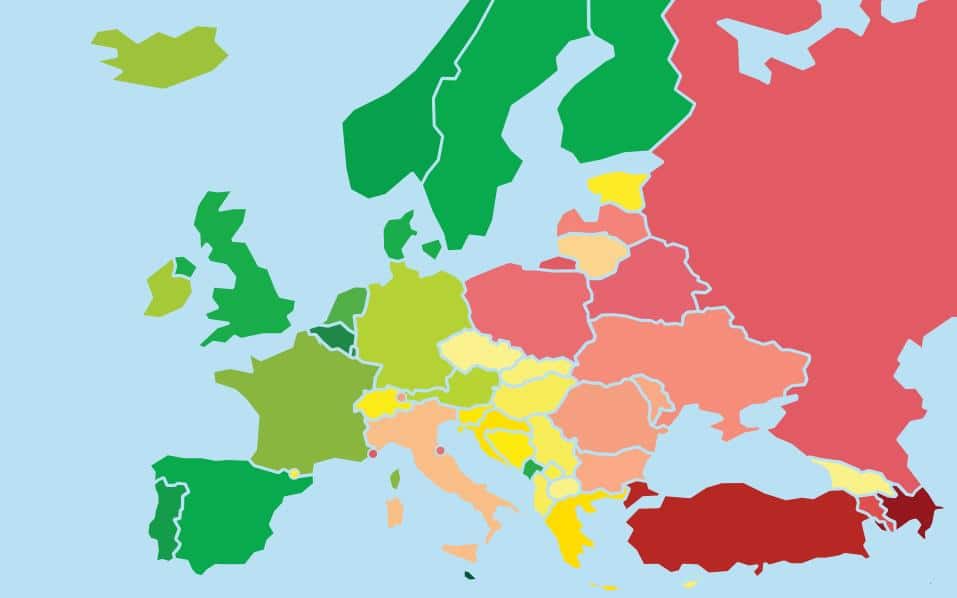When we think of Europe, we often think of freedom and tolerance... But does this also apply to the rights of queer people? This is exactly the question that the Rainbow Europe report recently addressed.
The result is likely to surprise many people... Partly because Germany did not make it to the top places.
One point that might have caused the relevant developments to be set back could be the pandemic. After all, this is not the first time that Corona has pointed, like a kind of magnifying glass, to problems that have "somehow always beenthere" but are now becoming even more tangible.
A sobering conclusion for Rainbow Europe
Rainbow Europe puts its finger in the wound and emphasizes, among other things, that Europe has obviously not managed to develop further in 2020 with regard to the rights of queers.
With regard to the rights of the community, it is evident that the northern and western countries seem to be even more tolerant and progressive here than the rest of the continent, where transsexuals, for example, are often marginalized and have to fight every day for a minimum of recognition.
A look at the individual placements
As mentioned earlier, Germany failed to present itself as particularly tolerant in the Rainbow Europe report. But who tops the list? As in the previous year, Malte was able to secure first place. Among other things, the small island town comes up with modern transsexual laws. Marriage for all is also a matter of course here.
Belgium and Luxembourg then take second and third place, ahead of Portugal and Norway. Bringing up the rear in the coveted top ten is Great Britain. Germany has to make do with 16th place. Turkey and Azerbaijan are at the bottom of the rankings.
Anyone who has followed the developments of the last few years will quickly notice that not much has really changed here. Apart from a few small jumps up or down, the list has remained the same.
What confirms states like Malta in their approach is sobering in another respect. Because: no movement also means standstill at the same time.
Clearly, individual countries have been so focused on combating the Corona pandemic that there has been little room for other endeavors.
Many members of the community do not feel safe
A look at the statistics shows that violence against queers is increasing in different regions of Europe. Many members of the LGBTQ community are afraid to openly show their love - especially in Eastern European countries.
The LGBTQ-free zones in Poland are just one detail in a wave of hatred that persists in the 21st century.
The results around Rainbow Europe thus show that crises like the Corona pandemic can cause other important areas of life to fall by the wayside. Hopefully, when the world can breathe a little easier about the pandemic and its effects, the fight for queer rights will continue.
After all, a possible standstill, as shown in the current table, can destroy many souls.
How does Rainbow Europe work anyway?
A fair question: What factors determine where a country is placed on the Rainbow Europe list?
The decisive factor here is not just one detail. Rather, there are numerous points that flow into the respective evaluation. In summary, however, it is about evaluating the legal position of queers in the respective country. Questions such as "How is discrimination against queers prevented?", "Are queers and straights treated equally?", "What laws apply in relation to trans people?" etc. play a particularly important role here.
And although (or perhaps precisely because) the Rainbow Europe list has changed almost nothing compared to the previous year, it is important to publish the corresponding rating. Even a (largely) standstill can be an important statement in this context.
How did same-sex marriage actually come about?

